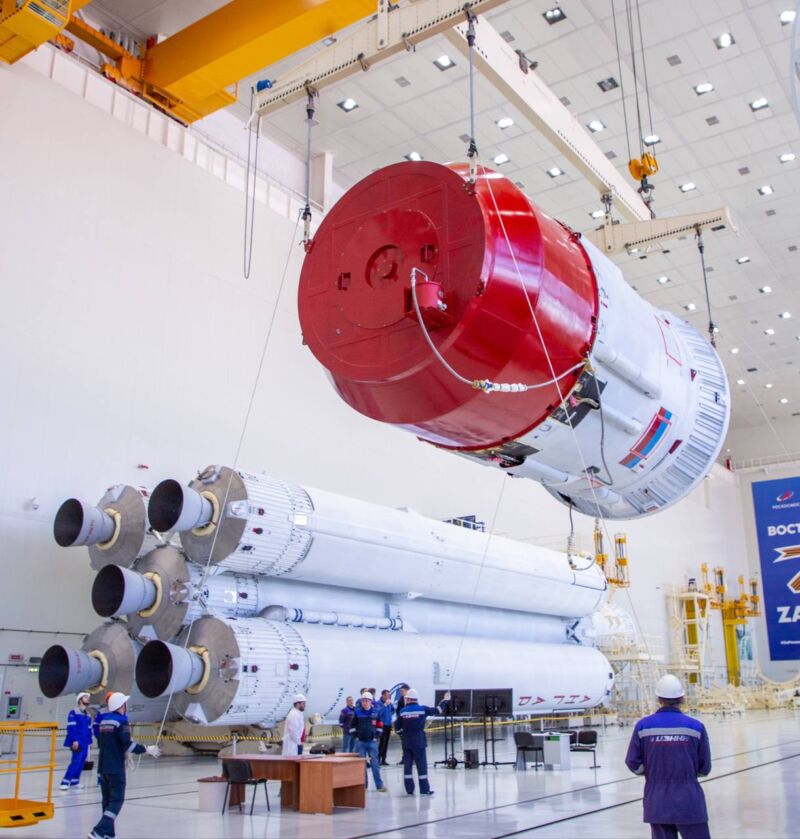Russia’s next-generation rocket is a decade old and still flying dummy payloads
Ars Technica » Scientific Method 2024-03-06

Enlarge / Technicians assemble an Angara A5 rocket at the Vostochny Cosmodrome in Russia's Far East. (credit: Roscosmos)
By some measures, Russia's next-generation flagship rocket program—the Angara—is now three decades old. The Russian government approved the development of the Angara rocket in 1992, soon after the fall of the Soviet Union ushered in a prolonged economic recession.
It's been nearly 10 years since Russia launched the first Angara test flights. The heaviest version of the Angara rocket family—the Angara A5—is about to make its fourth flight, and like the three launches before, this mission won't carry a real satellite.
This next launch will be a milestone for the beleaguered Angara rocket program because it will be the first Angara flight from the Vostochny Cosmodrome, Russia's newest launch site, in the country's far east. The previous Angara launches were based out of the military-run Plesetsk Cosmodrome in northern Russia.